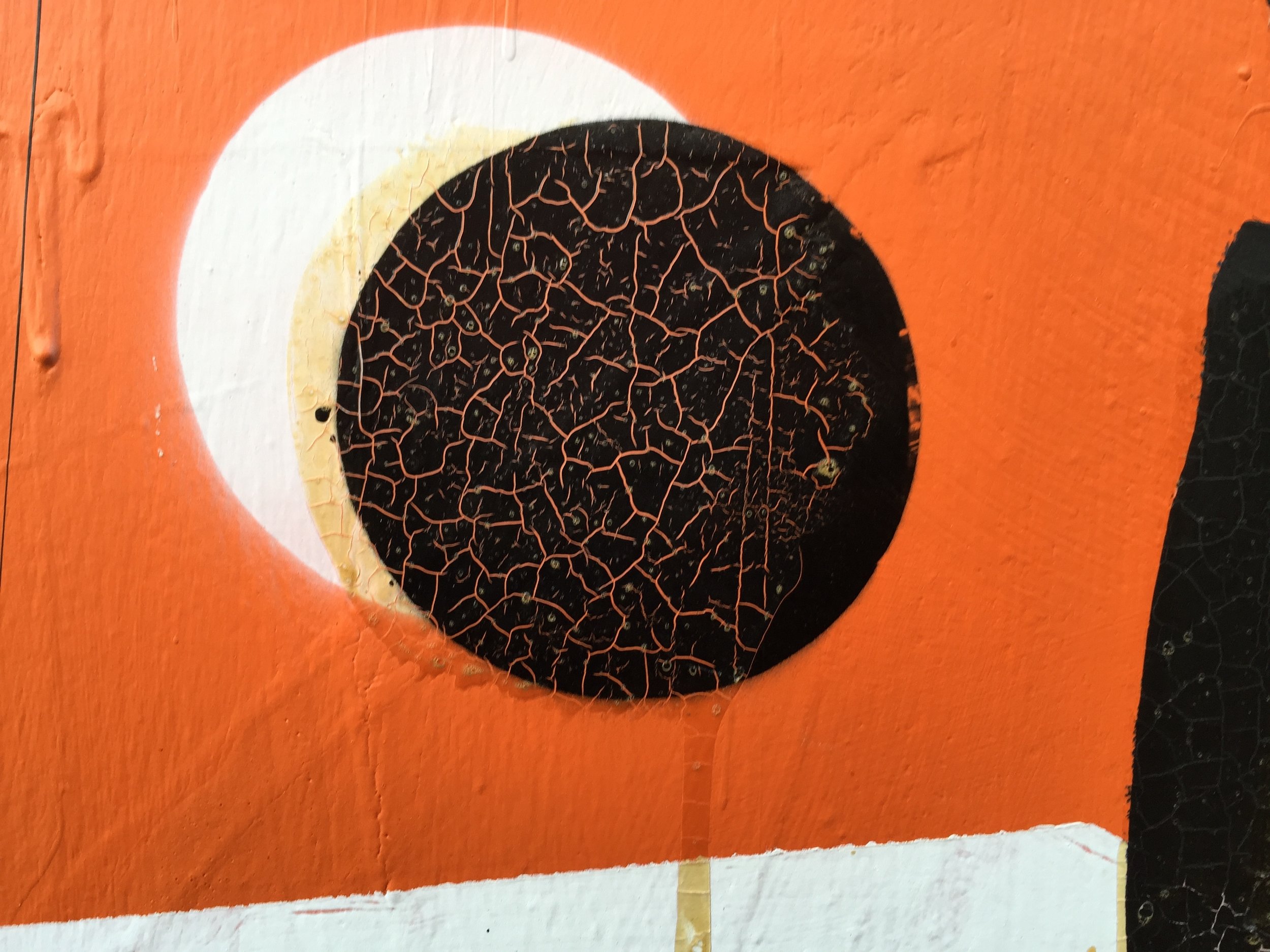The Museum of Temporary Art & Why It's Falling Apart
“Let [the paintings] rot. Let them change. Let people engage with the art in their daily lives.”
Something's up...
There is some colourful art peppering the urban scene here in Riversdale. If you've a taken a stroll down 20th St West, or meandered your way down to the Saskatoon Farmer's Market in recent times, you may have spotted some of it. There are a handful of paintings dotting the background of Riversdale's commerical district, exclusively in the alleys surrounding or near 20th Street West. Unless you happen to directly spot them, they tend to exist on the edges of your peripheral vision. Walk too fast with your phone in hand and they can easily go unnoticed.
In total, there are 10 paintings that have gone up. They are the product of the Museum of Temporary Art (MoTA), a public art experiment that comes from Open Studio Projects based right here in the neighbourhood. Jeff Nachtigall, founder of Open Studio Projects, is a well-known Saskatoon based artist, and judging from his TEDx talk, he's quite a storyteller, too. Ask Jeff about what MoTA is, and he'll explain it as visual art that exists in the space between graffitti and formal public art . To put that in perspective, MoTA installed a painting on the back of our office at The Two Twenty, but we had no idea or say in what the finished product was going to look like.
Our office at The Two Twenty received the gift of dancing bears. Very rad.
"MoTA inhabits the space between public art and graffiti." - MOTA's Website
MoTA's origins date back as far as 1999, and Nachtigall has done installations like this in other cities in North America like Detroit, and Winnipeg. The first MoTA paintings in Riversdale went up in 2012. To this day, they continue to remain outside, exposed to the elements and the public at large. Because of this exposure, they are changing, fading, degrading and sometimes disappearing all together. This is perfectly fine: it's by design. From the moment they go up, the paintings are vulnerable and this creates an interesting tension between art convention and art innovation. MoTA exists as a slightly contrarian art gallery. Typically, once art is created, we automatically assume that the art must be preserved, protected, and housed in an institution to prevent destruction. MoTA takes these assumptions and turns them completely upside down.
It might not be The Louvre, but through The Museum of Temporary Art, Nachtigall has reimagined Riversdale's alleys as corridors of an outdoor community art gallery, one that is fully accessible to anyone interested in pausing to take in the exhibit. There is no cost, no dress code, and no art history background required. There's no security, either. Some of the paintings have been marked, scratched, or tagged with spray paint. Is this vandalism or collaboration? The answer depends on who you ask. Nachtigall welcomes it, though, viewing it as a signal that the paintings have gotten people thinking and engaged, something he believes is fundamental to the role art should play in our lives.
So what comes next?
There is more art to come. The next iteration of MoTA - set to launch in Riversdale on April 1st, 2016 - will be taking the ideas of community, collaboration, and participation to new heights. Of the 10 new pieces Nachtigall has arranged to go up in the neighbourhood, the majority of them will have been created by other members of the community, not him. MoTA, in partnership with The Riversdale Business Improvement District, will act as a facilitor, helping school groups, businesses and people of all ages join the effort, create art, and ultimately share it with their community.
We are looking forward to it.
Links:
- Open Studio Projects
- The Power of Art in Healthcare - Jeff Nachtigal TEDx
- Jeff Nachitgall.com
- motaArt.com - The upcoming dedicated online home for MoTA










